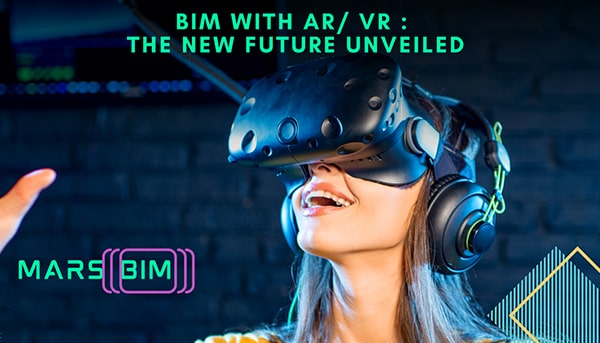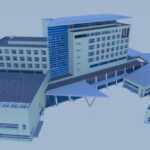The adoption of the 3D Models has changed the landscape of the AEC Industry as a whole.
BIM was already a setback for the earlier norms. With the increasing use of AR and VR, BIM Modelling is skyrocketing in its performance and efficiency.
The major part of AR and VR in BIM Modeling and the AEC industry is that they give life to an imagined project without a hand of sand involved.
The Benefits of AR/VR in BIM modeling or the Construction Industry can be very broadly classified as:
1. Designing
The Engineers and Designers work hard to visualize a design and then to check for feasibility. In areas where space is a restriction as well in areas of crowded housing, it is at times difficult to implement a project. With AR/VR it has become a cake walk as all the designing, aesthetics, feasibility, and additional requirements can be very well and very easily seen. The Evaluation of a project becomes so easy and removes redundancy.
2. Inspections
The 2 major facets of designing and construction or BIM Modeling includes: “as designed” and “as built”. Both specifications need to be handled with accurate directional advancements in order to avoid error. This is, of course, not easy as it sounds, but the advent of AR and VR has made the task easier. The probability to follow the safety checklist area-wise and filtering the different notions task-wise enhances the performance of the construction.
3. Renovations
One of the major setbacks for the construction Industry was at times to detect a fault in the constructed structure and work on mending those to enhance, renovate and give back life to the construction. Debugging used to be one of the most daunting tasks. It is now not with AR/VR Technology as all the validation, authentication and detailing can be seen and detected easily thereby correcting the same prior to the design. This also increases the life cycle of the project as well as reduces the redundant future management.
4. Ease of Construction
The growing use of AR/VR can be justified with the fact that the structural elements (windows, doors, walls) along with the MEP elements, are stacked in database. This simply implies the ease of facilitation of the construction process. Not only is the same related to new constructions, but the technology also makes it possible to visualize and implement the reuse of the existing structures so as to minimize the efforts of starting from scratch.
5. BIM Cloud Collaboration with AR/ VR
These days, along with BIM Modelling, BIM Cloud or BIM Database Management has also gained popularity. Precise Data and accurate BIM Models calculations , adjustments and implementation can. Be stored and the same can be used effectively collaborating with BIM Cloud Computing.
6. The Next Level : AI + AR/VR with BIM
Every AEC industry these days is quite familiar with the growing buzz around use of AI in BIM Modelling. The automation that AI provides cannot be compared with any other manual task. The error detection capability is something to a next level use of AI. But the future of the BIM industry can soon be the combination of these 2 tough competitors AI and the AR/ VR where every error can not just be pointed out but also felt.
Imagine holding the wall of a new construction of a 3D Model built by AI with the use of AR and VR. The moment of sharing what we call a “Future Reality”. The same is true and will be advanced more in the upcoming years. A simple built house Motor can be detected for any future faults, felt and corrected for a more reliable structure—the power of technology.
Precision, Accuracy, Visualization, Implementation and Finally Construction, a smooth Integrated Flow is what will come in the upcoming years.
Conclusion: BIM Industry is a high investment driven Industry that stands on the correct Structuration along with an advanced Aesthetics. From Base to a complete Model (floor by floor, equipment by equipment) can be easily and readily envisaged via the advanced tools especially AR and VR. The Industry is growing and soon will be on the top level of technology.



